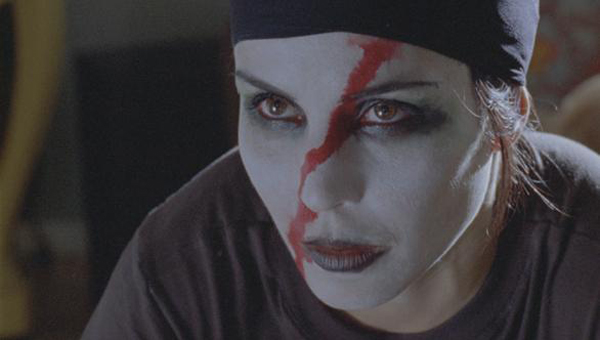The Girl Who Played With Fire DVD Review

I love playing with fire.
Well, who doesn’t?
Fortunately, thrice weekly therapy sessions for my pyromaniac tendencies are one of the many luxuries afforded to bourgeois sprogs in life.
I’d suggest Lisbeth Salander, the protagonist of The Girl Who Played With Fire, hasn’t enjoyed quite as much exposure to the self indulgent virtues of counselling.
The second silver screen adaptation of Stieg Larsson’s hugely popular Millennium trilogy picks up one year after The Girl With The Dragon Tattoo left off.
Having cleared his name, Mickael Blomkvist has returned to Millennium magazine to continue exposing the corrupt elements of Sweden’s cognoscenti.
Although his partner in solving crime walked off into the sunset, with enough money to ensure a life time of happy endings, Salander has reluctantly resurfaced in Sweden to tie up some loose ends.
And remind her former guardian of the consequences should he tire of keeping up his part pretending she’s still in his care.
Salander’s powers of persuasion would make a Soho dominatrix blush, as she gleefully administers a taste of their own medicine to a few of those men who hate women.
It is this brand of vigilante justice that draws her into a web of murder and deceit that Blomkvist must decipher if Salander is to clear her name.
Having enjoyed the taut action of The Girl With The Dragon Tattoo, but not enough to pick up the subsequent books, I was a little underwhelmed with the second cinematic instalment of Stieg Larsson’s legacy.
As with many modern sequels, The Girl Who Played With Fire doesn’t have the same power or impact as Lisbeth Salander’s origin story.
Part of this stems from the inescapable feeling that this film is half a story, to be completed by the release of The Girl Who Kicked The Hornet’s Nest this November.
The self contained first film followed by the two part sequel is de rigeur for contemporary cinema, but I find most second acts suffer in comparison to the satisfaction of watching a complete story unfold.
But the main reason The Girl Who Played With Fire feels less satisfying is because Blomkvist and Salander, whose burgeoning relationship provided the emotional resonance of the first film and a welcome counterpoint to the stark violence portrayed, only share one scene together.
Naturally, there are only so many liberties you can take when adapting your source material to the big screen.
And I understand this aspect of the adaptation remained faithful to the book.
Still, I found myself waiting for the moment where they meet again and peculiar that Larsson would choose to jettison the heart of his first novel.
As a result, The Girl Who Played With Fire is a little unbalanced compared to its predecessor and leaves the viewer with more questions than answers.
Which I suppose is the point of the second film in a trilogy.
But not if it leaves you wondering whether you care enough to see these issues resolved.
The ending also stretched credibility to breaking point; taking the audience out of a story the author has grounded in reality and slapping them in the face with acts that defy belief.
Of course, it doesn’t matter whether events adhere to logic or reason; it’s in the script so that’s all you need to know.
Perhaps Lisbeth Salander isn’t the only one who likes to play with fire.
And I wonder how many other people will feel burned by Stieg Larsson’s sophomore effort.
Jonathan Campbell